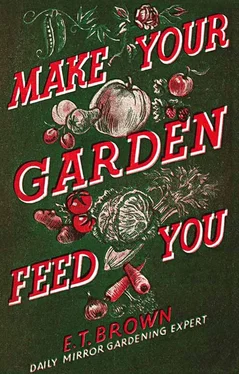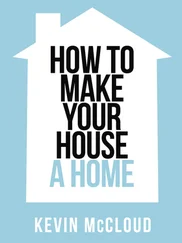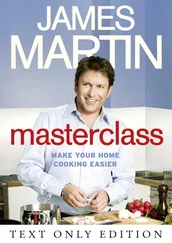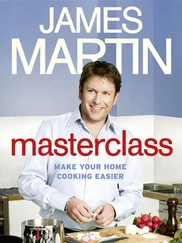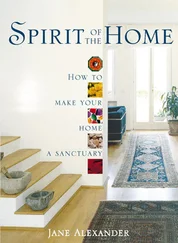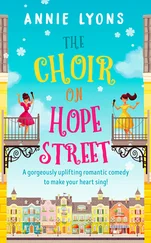The book is severely practical. The author takes a plot of ground—90 feet by 60 feet—and shows exactly how it must be arranged and treated to make it yield the maximum amount of food for the minimum expenditure of money and labour. He explains why it is economical to keep fowls, rabbits, and bees, in addition to growing vegetables and fruit, and he gives sound advice on how to overcome the war-time difficulties of manuring the ground and feeding the livestock.
The best way to use this book is to read it straight through as far as the end of the section on vegetable growing, and to spend half an hour or so absorbing the details of the plan shown on pages 2 and 3. The next step is to adapt the author’s arrangement to suit your own garden or allotment. You may have to leave out the fruit trees or decide bee-keeping is unsuitable in your neighbourhood. But the main features of the scheme—especially the inclusion of three vegetable plots—can be kept for any garden, whatever its size or special peculiarities. If you only have room for one or two rows of vegetables you can plan to grow different crops from one year to the next.
CHOOSE WHAT YOU WANT FROM THE CONTENTS LIST
When you have fixed the layout for your own garden and have the preliminary details worked out, then look at the contents list on page v. This shows the range of subjects covered by the book and all you need to do is to turn to the page where your special problems are solved. How deep to dig the ground, how much seed to buy, when to put it in, when and how to transplant the seedlings—the answers to all such questions can be found immediately. Some difficulties, however, are not easy to clear up in words; the distinction, for example, between a useful plant and a dangerous weed requires an object lesson rather than an explanation. These obstacles, therefore, are removed by a number of very clear illustrations which will be of use and interest to beginner and veteran alike.
WHATEVER the shape and size of your allotment or garden, you are advised to decide where everything you intend to grow is to be planted before you start. Similarly the sites of the shed, greenhouse, manure heap, etc., should all be chosen at the outset.
The diagram given here (Fig. 1) shows the layout recommended for a plot measuring 90 ft. by 60 ft. If your allotment or garden plot is smaller you should not have much difficulty in adapting the layout to suit your individual need. For instance, if your plot measures go ft. by 45 ft. and you propose to go in for all the four departments of food production, all it means is that the three vegetable plots will be 27 ft. by 28 ft. instead of 42 ft. by 28 ft.
It is to be hoped that the 90-ft. long north boundary consists of a solid fence, since this simplifies things considerably; but if it happens to be a wire-strand fence, or even no fence at all, this little difficulty can be overcome easily enough and without the outlay of a lot of money.
Should there be no fencing, run three strands of stout wire from the greenhouse and a post in one corner to the corner of the general-purpose shed, and again from the east corner of the shed to the corner of the poultry house, covering this with 1-in. mesh, 4-ft. high wire-netting. Support by means of 3-in. square stakes placed about 5 ft. apart.
PLACING THE FRUIT TREES AND TOMATOES
Leaf-mould is invaluable, particularly in these days when stable manure is so difficult to obtain, so provision has to be made for its storage. And the same is true of the compost heap. These 6 ft. by 5 ft. areas can be fronted by 5-ft. high trellis with a bed in front for planting soft fruit climbers.
At the back of the seed-bed and between the frames and the north boundary cordon, fruit trees or tomatoes may be grown if the wall is solid. If the fence is only of wire strands, tomatoes are ruled out, because they would not be sufficiently sheltered.
It is suggested that espalier fruit trees should be planted at the north end of plots 1 and 2, and that a herb bed, 4 ft. in width, should be sown or planted at the far end of plot 3, while to accommodate a greater number of soft fruit bushes 8 ft. or 10 ft. long pergolas—a string of connected arches—should be erected at each end of the two main paths. The bee-hives can be placed conveniently close to the fruit trees of the centre plot, where the bees will help to fertilize them.
WHY THREE VEGETABLE PLOTS ARE ESSENTIAL
Whatever else you may not do, you should divide the area to be used for growing vegetables into three separate plots. It does not matter whether these are separated by a path, as shown in the diagram, or not, but you should mark their confines in one way or another.
Much of the success that will attend your efforts depends upon planning your crops in three groups. Here are the reasons:
1. No crop should be taken off the same plot two years in succession.
2. Some crops are shallow-rooting and only take plant food from the surface, while others are deep-rooting and obtain their food from the lower soil. By arranging for a deep-rooting crop to follow a shallow-rooting one, and vice versa, you are saved spending a lot of extra money on manure or chemical fertilisers.
3. Some plants require a large quantity of one kind of plant food, but others need little of it. Again, manure is saved by growing one such crop after the other.
The three plots are marked : Plot 1, Green Crops; Plot 2, Peas, etc.; and Plot 3, Root Crops. The second year the crops are shifted round, so that Plot 1 carries the roots, Plot 2 the greens and Plot 3 the peas, etc. The next year they are moved a step again, and so on. Each crop comes back to its original site every third year.
VEGETABLES YOU ARE ADVISED TO GROW
Various points have been taken into consideration in the choice of vegetables to be grown, and the amount of space which is devoted to each—easy cultivation, high food value, health-promoting qualities, and a regular supply of vegetables in season without a surplus of any. In connection with the last point it must be remembered that the requirements of the rabbits and poultry have to be taken into account.
The vegetables to be grown are set out below in the order in which they are placed in their respective plots. 1
GREEN VEGETABLES ON THE FIRST PLOT
Reading from the left side of the diagram (Fig. 1), the crops recommended are as follows:
SUMMER CABBAGES.—Two rows, with 18 in. between the plants, giving a total of 56 heads.
SUMMER CAULIFLOWERS.—Two rows, 18 in. between the plants, a total of 56 plants.
EARLY SAVOYS.—One row, 15 in. between the plants, a total of 34.
LATE SAVOYS.—Two rows, 18 in. between the plants, a total of 56.
BRUSSELS SPROUTS.—Three rows, 2 ft. between the plants, a total of 63.
AUTUMN CAULIFLOWERS.—One row, 2 ft. between the plants, a total of 28.
BROCCOLI.—One row, 2 ft. between the plants, a total of 28.
KALE OR BORECOLE.—One row, 2 ft. between the plants, a total of 28.
These crops take a long time to grow to maturity. To conserve valuable space, turnips, early carrots, lettuces, summer spinach and salad onions should be sown between the main vegetable crops as catch-crops. These crops will all be ready for harvesting before the main vegetables attain any great size and require the space they occupied.
VEGETABLES FOR THE SECOND PLOT
On Plot 2 the crops are as follows: Early peas, 2 rows; main-crop peas, 3 rows; dwarfed runner beans, 2 rows; celery (grown in a trench), 1 row ; dwarf French beans, 2 rows; leeks, 1 row ; and shallots, 1 row. It is not possible to say how many bushels of peas and beans will be produced, but with 1 ft. between the plants there should be 42 heads of celery and, with 6 in. between the plants, there will be about 84 leeks.
Читать дальше
